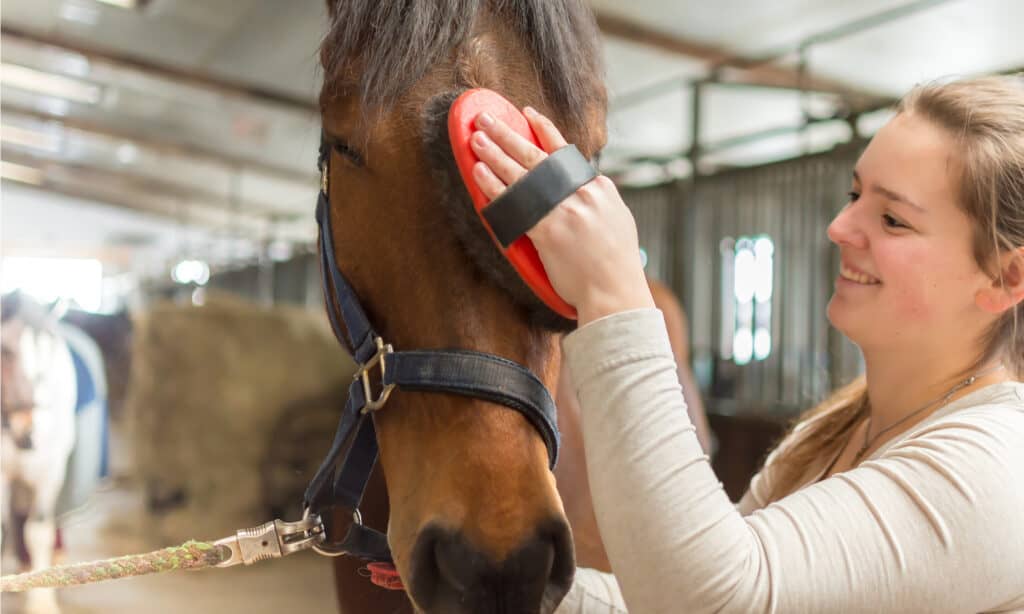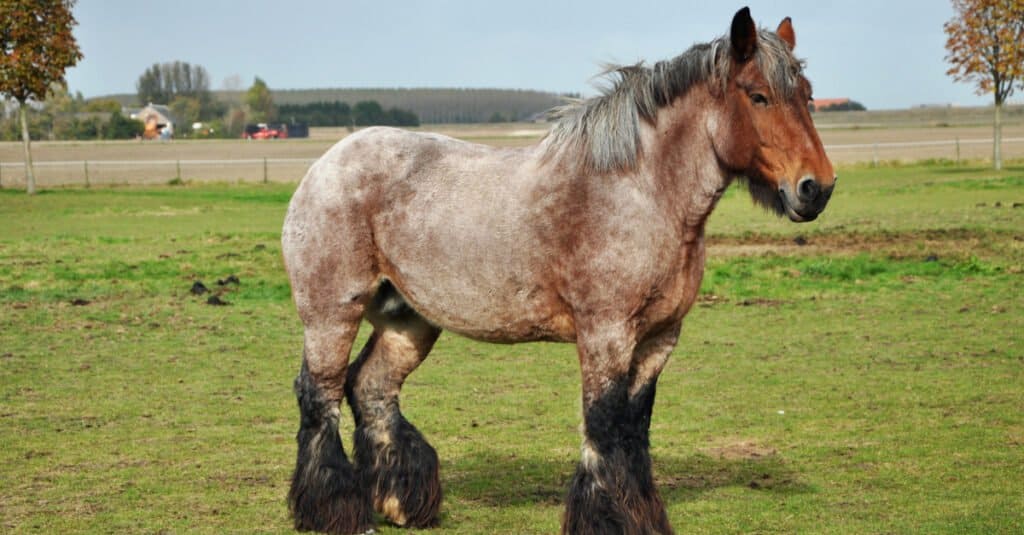People use horses for a variety of purposes, including racing and other economic operations as well as being lovable household pets. Regardless of your horse’s exact role, it is a valuable investment in addition to being a live animal. That’s why it’s critical to have the proper equestrian insurance in place to safeguard your horse from harm.
Fortunately, our team of writers did the work to assist you in obtaining everything you need to know about horse insurance, including the cost. But, before we get too excited, let’s take a deeper look at this important coverage.

In addition to being beloved pets, horses are a significant financial investment. Equestrian insurance can help defray the cost of their medical care.
©Tanja Esser/Shutterstock.com
Types of Horse Insurance Coverage
If you’re eager to get horse insurance, keep reading to find out what kinds of coverage are accessible. We’ll discuss how much they cost, and which ones will be a great fit for you.
Mortality/Theft
Mortality/theft policy is the most basic coverage, which is necessary before extra coverage can be acquired. If you’re new to owning a horse, it can only be covered for the purchase price. When a horse has shown to be more desirable by profits, a show history, breeding revenue, and/or training expenditures, the horse’s insured value can be increased.
If your horse passes away or is stolen while insured, you will be compensated for the horse’s insured value. Death as a result of willful neglect or abuse is not covered. Depending on your policy, you may be subject to additional exclusions.
You must select whether you want limited or complete coverage before acquiring a mortality/theft policy. Limited coverage contains exclusions, but complete coverage is extensive and covers not only death as a result of natural causes but also died as a result of humane destruction and other reasons.
Insurance companies calculate the yearly cost as a percentage of the projected worth of your horse, insurance firms have set minimum policy pricing that ranges from $150 to $250.
Major Medical
Uninsured horse owners may face a big problem when the expenses of veterinary care for lameness, trauma, and colic treatment rise, forcing them to choose euthanasia if they simply couldn’t afford the healthcare their horse needs.
Major medical insurance might assist you to avoid making that tough decision by easing the financial stress. To qualify for significant medical coverage, you must protect your horse must first under mortality/theft insurance.
The coverage limit you choose determines your premiums. A major medical coverage with a $5,000 cap costs around $200 per year on average. A $7,500 limit costs roughly $340 per year, $10,000 costs around $450, and a $15,000 limit costs around $675. As per Colorado State University, the bulk of colic patients leave with a bill ranging from $3,500 to $5,500; in more difficult cases, costs can rise to tens of thousands of dollars.
Once you have insurance on your horse, you must give all treatment necessary to save your horse If your horse requires colic surgery and you choose to euthanize rather than put the horse through the trauma of surgery, the insurer is not bound to pay out on the insurance. If every effort is made to save the horse but it does not live, you will be compensated under the insurance.
Deductibles are a part of all major medical insurance coverage. Deductibles are usually $300, although they might vary depending on the carrier. Most pet insurance companies do not cover pre-existing conditions, elective surgery, and regular vet services like vaccinations.

A mortality/theft policy will reimburse you if your horse passes away or is stolen while insured.
©defotoberg/Shutterstock.com
Accident Sickness Disease (ASD)
Investing in breeding stallions is covered by ASD insurance. If your stallion’s capacity to breed is lost as a result of an accident, illness, or infection, the policy reimburses you for the stallion’s insured value.
You’ll need to prove the horse’s potential as a stallion, especially since he’s bedded mares in a minimum of one mating season before coverage begins. Your veterinarian will also need to examine your sperm. If your stallion is no longer able to reproduce and you want to be reimbursed for his insured value, the insurance company will need the stallion to be gelded.
Loss-of-Use
Loss of use may make sense for you depending on your horse’s performance level. Performance horses participating at the uppermost tiers of competition for their activity, including reining, Western pleasure, or cutting, are more likely to be subjected to loss-of-use restrictions.
Loss-of-use coverage for a leisure riding horse is unlikely to be available.
There are two types of loss insurance: accidental (limited loss) and total loss. Accidental or restricted loss insurance covers a proportion of the horse’s entire value if the horse is unable to execute his original purpose due to an accident.
Full loss insurance pays a portion of your horse’s worth if an accident or internal illness, such as Equine Encephalomyelitis, prevents him from fulfilling his designated function.
Horse Insurance Cost
Cheap horse insurance, like any other insurance coverage, isn’t always the greatest option. It’s critical to research horse insurance rates, but be careful to consider your deductibles, covered procedures, and any extra out-of-pocket costs.
On average, you should anticipate spending between $150 and $200 each year for $5,000 in major medical coverage. The percentage of people who are covered for surgery varies a lot. Your horse’s mortality premiums are determined by its age, use, and value. Depending on the insurance worth of your horse, yearly premiums might be as high as 3%.
Things to Consider
When comparing horse insurance providers and plans, there are several aspects to consider.
Pre-Existing Conditions
Every year, horse insurance plans modify their limitations and what constitutes a pre-existing ailment. It’s still considered a fresh policy term even if you’re renewing a policy. As a result, if something occurs to your horse while he’s insured, the insurance provider may treat it as a pre-existing condition the next year.
Limitations
Exclusions in policies might change, so be aware and read the details carefully. Many horse insurance plans exclude horses over the age of 15, as well as horses with pre-existing or degenerative illnesses.
Company Credibility
Because health insurance for horses necessitates specialized expertise, it’s best to work with a livestock medical and mortality insurance specialist. You should also confirm that the company’s underwriters are livestock experts. How long has the firm been in operation? What is their track record? Do your research to get reputable and trustworthy insurance.
Bottom Line
Having a horse for leisure or competitions is a great thing. Paying for abhorrently high vet bills isn’t. Considering horse insurance can save you a lot of money, fairly quickly. Ask yourself if it’s worth it and be sure to do plenty of research so that you’re getting the best policy for your horse and your wallet.
Up Next
- The Top 13 Biggest Horses in the World
- The Top Horse Dewormers In 2022
- 10 Prettiest Horses in the World
- The Top Horse Saddles in 2022
The photo featured at the top of this post is © Alexia Khruscheva/Shutterstock.com
Thank you for reading! Have some feedback for us? Contact the AZ Animals editorial team.






